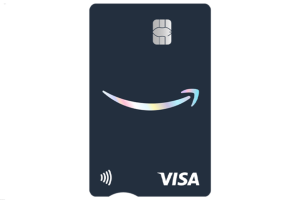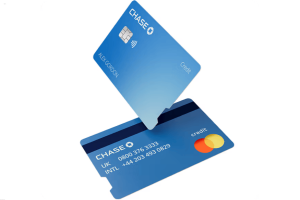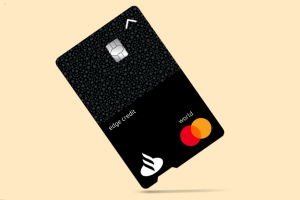Over the past decade, challenger banks have transformed the banking landscape in England. Known for their sleek mobile apps, fee-free services, and customer-focused approach, these digital-first banks have gained significant popularity, especially among younger generations and tech-savvy customers.
But with so many options available, many wonders: Are challenger banks really worth it?
In this guide, we’ll break down what makes challenger banks stand out, their pros and cons, and how they compare to traditional banks—helping you decide if making the switch is the right move.
1. What Are Challenger Banks?

Challenger banks are smaller, agile financial institutions that aim to compete with traditional high street banks. Unlike traditional banks, most challenger banks operate entirely online or via mobile apps, offering a streamlined digital banking experience.
Key Features of Challenger Banks:
- Mobile-First Approach: Easy-to-use apps with budgeting tools and instant spending notifications.
- Low or No Fees: Many offer fee-free current accounts and low-cost foreign transactions.
- Innovative Features: Round-up savings, spending insights, and cryptocurrency integration.
- Quick Account Setup: Open an account within minutes, often without visiting a branch.
Popular Challenger Banks in the UK:
- Monzo
- Starling Bank
- Revolut
- Atom Bank
- Tide (for business accounts)
2. The Appeal of Challenger Banks
Challenger banks have attracted millions of UK customers thanks to their customer-centric approach and modern technology.
Why People Love Them:
- User-Friendly Apps: Real-time spending notifications, budgeting insights, and instant transfers.
- Fee-Free Overseas Spending: Many challenger banks don’t charge foreign transaction fees, making them popular with travellers.
- Better Interest Rates: Some offer competitive rates on savings and fixed-term accounts.
- 24/7 Customer Support: In-app chat support often available around the clock.
3. How Do Challenger Banks Compare to Traditional Banks?
| Feature | Challenger Banks | Traditional Banks |
| Account Opening Process | Online, within minutes | In-branch or online, slower |
| Fees | Often low or zero | Potential monthly fees |
| Interest Rates | Competitive (varies by bank) | Generally lower |
| Overdraft & Loan Options | Limited or none | Wide range of lending options |
| Physical Branches | None | Extensive branch networks |
| Customer Service | In-app support, 24/7 for some | Branch visits, phone, or online |
4. Benefits of Using a Challenger Bank

1. Simplified Money Management
Many challenger banks include features like:
- Spending Breakdown: Categorise your expenses automatically.
- Savings Pots/Spaces: Separate funds for specific goals (holidays, bills, etc.).
- Round-Up Savings: Automatically round up transactions to the nearest pound and save the difference.
2. Lower Fees and Transparent Pricing
- No Monthly Account Fees on basic accounts.
- Fee-Free Foreign Spending with banks like Starling and Monzo.
- Low-Cost International Transfers with Revolut and Wise.
3. Faster Transactions and Notifications
- Instant Spending Alerts every time you use your card.
- Faster Payments for transfers and bill payments.
5. Potential Drawbacks of Challenger Banks
While challenger banks offer plenty of perks, they may not suit everyone.
1. No Physical Branches
- If you prefer in-person banking, the lack of branches might be inconvenient.
2. Limited Lending Options
- Some challenger banks offer limited overdrafts, mortgages, or personal loans compared to traditional banks.
3. Cash Deposits Can Be Tricky
- Depositing cash isn’t always straightforward. Monzo, for example, allows cash deposits at PayPoint locations but charges a small fee.
4. Potential for App Outages
- As digital-first banks, technical glitches can sometimes disrupt service.
6. Who Are Challenger Banks Best For?
Challenger banks are ideal for:
- Young Professionals: Who prefer mobile-first banking.
- Frequent Travellers: Thanks to fee-free foreign spending.
- Small Business Owners: Many offer tailored business accounts (e.g., Tide).
- Budget-Conscious Savers: Take advantage of budgeting tools and saving features.
They might not be ideal if you rely on complex financial services like large-scale loans or require regular in-branch support.
7. Tips for Choosing the Right Challenger Bank

- Compare Features: Look for budgeting tools, international fee policies, and interest rates.
- Check Fees: While many are fee-free, premium features (like insurance or higher ATM withdrawal limits) may come at a cost.
- Consider Security: Ensure the bank is FCA-regulated and that deposits are protected by the FSCS (up to £85,000).
8. Are Challenger Banks Safe?
Yes, most challenger banks operating in the UK are regulated by the Financial Conduct Authority (FCA) and offer protection under the Financial Services Compensation Scheme (FSCS) for eligible deposits. Always verify this before opening an account.
Additionally, many offer advanced security features such as:
- Biometric Login (Face ID/Fingerprint)
- Two-Factor Authentication (2FA)
- Instant Card Freeze/Unfreeze if your card is lost or stolen
Conclusion: Should You Make the Switch?
Challenger banks have disrupted the UK banking scene by offering innovative, low-cost, and user-friendly services. For those who value flexibility, smart budgeting tools, and fee-free spending abroad, switching to a challenger bank could be a game-changer.
However, if you need access to in-branch services, extensive lending options, or prefer a more traditional banking experience, it might be best to use a challenger bank alongside your existing account.
Key Takeaway: Challenger banks in England provide modern, mobile-first banking solutions with low fees and innovative features. They’re an excellent choice for tech-savvy users, but may not completely replace the need for traditional banking for everyone.
Before making the switch, consider your financial habits and needs—and don’t hesitate to try out a challenger bank alongside your current account to see if it’s the right fit.









